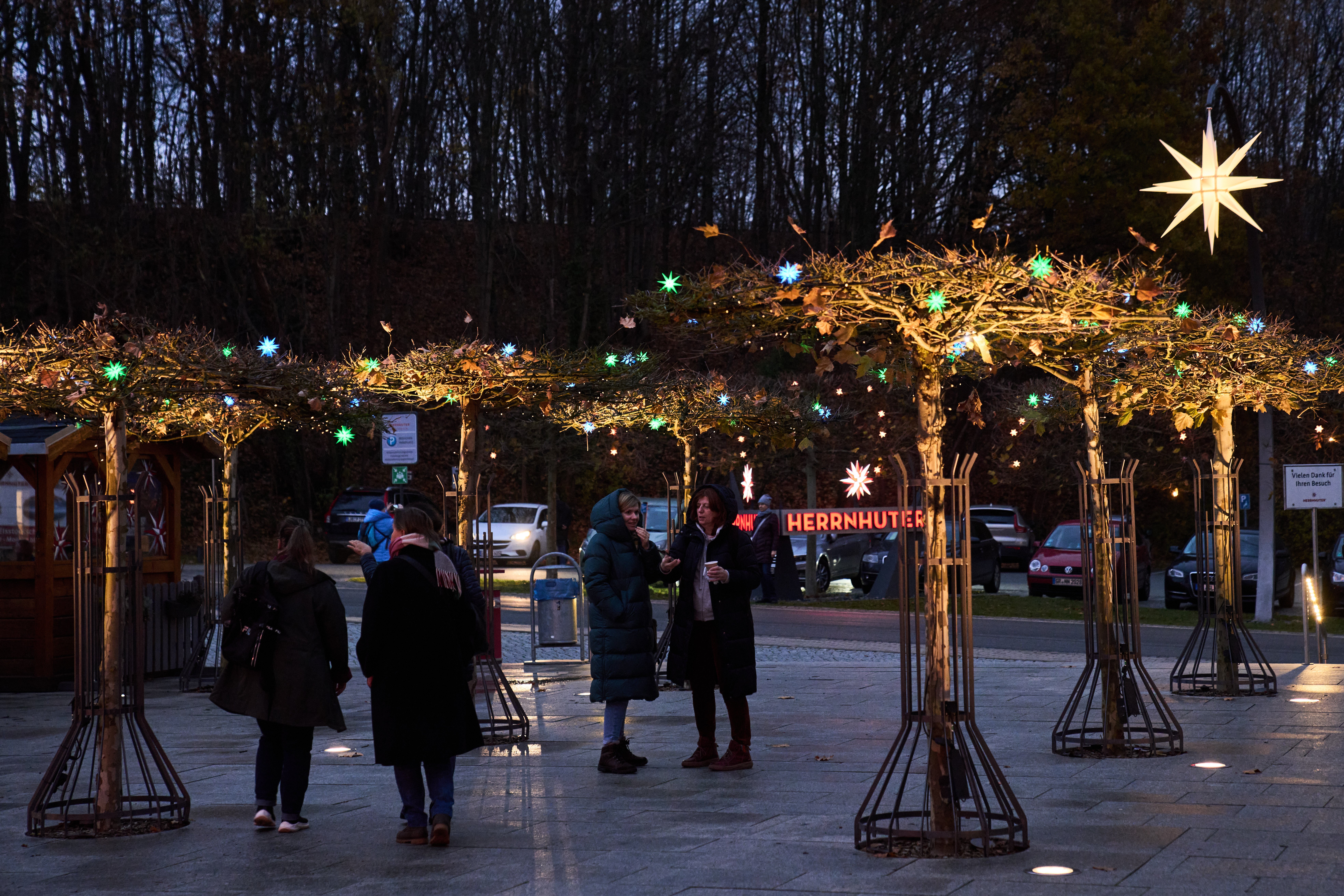- News
- World
- Europe
Thousands of Moravian stars decorate homes and churches during Christmas
Kirsten GrieshaberThursday 27 November 2025 09:58 GMTComments open image in galleryMoravian stars, crafted in various sizes and hues, are a ubiquitous sight, gracing everything from church steeples and apartment windows to the chancellery in Berlin (Associated Press)
open image in galleryMoravian stars, crafted in various sizes and hues, are a ubiquitous sight, gracing everything from church steeples and apartment windows to the chancellery in Berlin (Associated Press)
On The Ground newsletter: Get a weekly dispatch from our international correspondents
Get a weekly dispatch from our international correspondents
Get a weekly international news dispatch
 Email*SIGN UP
Email*SIGN UPI would like to be emailed about offers, events and updates from The Independent. Read our Privacy notice
Across Germany, the festive period is traditionally brightened by a myriad of Christmas stars, yet none command such widespread recognition and affection as the Moravian stars originating from the eastern village of Herrnhut.
These distinctive illuminations, crafted in various sizes and hues, are a ubiquitous sight, gracing everything from church steeples and apartment windows to the chancellery in Berlin during Advent.
Their profound symbolism is rooted in Christian tradition.
Katja Ruppert, managing director of the Herrnhuter Sterne manufacturing company, explains: "It's the symbol of the Star of Bethlehem, which guided the three wise men to the Christ Child in the manger."
The intricate stars have been handmade in Herrnhut for more than 180 years, a village itself founded by refugees.
Members of the Moravian Church, one of the world’s oldest Protestant denominations, sought refuge in the German region in 1722, fleeing persecution from the historical provinces of Bohemia and Moravia, now part of the Czech Republic.
 open image in galleryThe stars have been handmade for over 180 years in Herrnhut, which was founded by refugees of the Moravian Church fleeing from the historical provinces of Bohemia and Moravia in what is now the Czech Republic. (Associated Press)
open image in galleryThe stars have been handmade for over 180 years in Herrnhut, which was founded by refugees of the Moravian Church fleeing from the historical provinces of Bohemia and Moravia in what is now the Czech Republic. (Associated Press)Count Nikolaus von Zinzendorf granted them asylum, providing land where the believers established Herrnhut, a name that translates roughly to "Under the Protection of the Lord."
The famous Christmas star was created during a geometry lesson
The church members were very active in education.
In one of the schools they founded, the famous Moravian star was created when a math teacher — trying to descriptively explain geometry — asked his students to create a “truncated cuboctahedron with 17 four-corner based points and eight three-corner based points.”
That initial cardboard star was patented in 1925, in a way that its points could be dismantled for shipping and later be clamped together again.
The smallest star has a diameter of 8 centimeters (3.14 inches) and sells from €19 ($22), while the biggest one measures 130 centimeters and costs €205. Special orders are more expensive and can measure up to 250 cm.
 open image in galleryThe smallest star has a diameter of 8 centimeters (3.14 inches) and sells from €19 ($22), while the biggest one measures 130 centimeters and costs €205 (Associated Press)
open image in galleryThe smallest star has a diameter of 8 centimeters (3.14 inches) and sells from €19 ($22), while the biggest one measures 130 centimeters and costs €205 (Associated Press)Originally, the points of the Moravian star were white and red, symbolizing both “purity and the blood of Jesus Christ," Ruppert explained in an interview with The Associated Press.
As the production of the stars expanded, so did the range of colors. Today they are made out of paper or plastic and come monochrome, varicolored, or with patterns including some made out of the pages of old books that are dubbed “literary stars."
There are even stars with floral spring motives for those who want to keep the decorative ornaments up in their homes all year, not just during Christmas season.
People can make their own stars at a workshop in Herrnhut
Recently, the company also opened a handicrafts workshop in Herrnhut where people can make their own stars. In addition, there's a big showroom presenting and selling all different varieties.
White, yellow and red are among the most popular creations, but the company's annual special edition — this year its a shiny, purple star — has also become a sought-after collectible item.
“We are now taking part in many Christmas markets. We have gone to trade fairs. We have found many retailers who would like to work with us there,” Ruppert said, explaining how the Moravian star's popularity has spread widely within Germany in the past 20 years.
 open image in galleryKatja Ruppert, managing director of the Herrnhuter Sterne manufacturing company, explained how the Moravian star's popularity has spread widely within Germany in the past 20 years (Associated Press)
open image in galleryKatja Ruppert, managing director of the Herrnhuter Sterne manufacturing company, explained how the Moravian star's popularity has spread widely within Germany in the past 20 years (Associated Press)Nowadays, about 230 employees make more than 820,000 stars every year and more than 60,000 people visit the store and workshop annually, mostly during the weeks before Christmas.
So far, the star is not being exported extensively to other countries, Ruppert said. But other communities of the Moravian Church such as the one in Bethlehem, Pennsylvania, or Christiansfeld in Denmark, also are featuring the star as a symbol of their faith during Advent.
Silk Schmidt, a hairdresser from Neueibau in southeastern Saxony, had come to Herrnhut with her sister-in-law in mid-November to make three stars as Christmas gifts for her two sons and mother.
“I myself have at least ten stars at home,” she said, adding that she usually puts them up on the first weekend of Advent.
“When it’s so dark outside and not nice anymore, then the stars hang in the window, which is actually really beautiful,” she said.
"Lights everywhere.”
More about
GermanyBerlinChristmasJoin our commenting forum
Join thought-provoking conversations, follow other Independent readers and see their replies
Comments